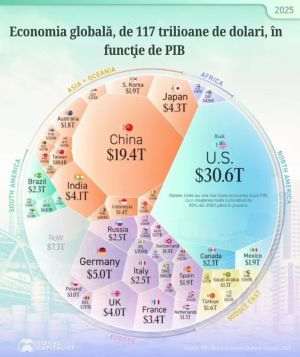
The decline of global trade has picked up significantly in March 2020, according to the latest date from the World Trade Monitor report, posted by Dutch institute CPB (www.cpb.nl).
The volume of trade exchanges has accelerated its annual drop to 4.3%, the biggest since October 2009, of 2,1% in the previous month (see chart 1), amid a monthly decline of 1.4%.
Monthly drops of 1.6%, and 0.7% respectively, have also been seen in the first two months of the current year, which have led to a quarterly drop of 2.5%.
The decline of global trade has been caused, in particular, by the evolution of the trade exchanges in the advanced economies, which have accelerated their annual drop to 7.1%, from 1.7%, amid a monthly drop of 4.6%, and following an annual drop of 6.8% of the exports and of an annual drop of 7.3% in imports.
The volume of trade exchanges among emerging economies slowed down its annual growth to 0.3%, from 2.5% in the previous month, amid a monthly increase of 3.1%.
According to data from the CPB, trade has seen a significant recovery in China. The annual growth of 0.4% came after a 4.5% drop in February 2020, amid a monthly growth of 9.2%. The volume of imports has increased at an annual rate of 2.3%, and exports have seen a slowdown in their contraction to 1.4%,, down from 5.1%, amid a monthly increase of 12.4%.
At the level of the United States, trade slowdown has sped up, up to an annual rate of 5.2%, from 2.3% in the previous month, amid a monthly decrease of 2.3%.
This trend will accelerate sharply in the coming period, as indicated by the collapse of the transport index at Cass Information Systems (CIS).
According to the latest monthly report, in April 2020 the index saw its largest annual decline since the Great Recession index of 2008 - 2009, of 22.7%, after a decrease of 9.2% in the previous month, due to a monthly decrease of 15.1%.
The CPB report highlights the particularly strong contraction in the volume of trade in the Eurozone. The annual decrease in March 2020 accelerated to 9%, from 0.6% in the previous month, amid a monthly decrease of 7.6%.
Eurozone imports fell at an annual rate of 10%, amid a monthly decline of 7.6%, while exports fell at an annual rate of 8.1%, amid a monthly decline of 7.7% %.
In Eastern European economies, the annual dynamics of trade remained in positive territory, due to the favorable evolution of imports.
The volume of trade accelerated its annual growth to 1%, from 0.7% in the previous month, but saw a monthly decrease of 1.9%. The annual volume of imports slowed down to 3.2%, from 4.3%, amid a monthly decline of 2.1%, and exports moderated their annual decline to 1.1%, from 2.7%, given a monthly decrease of 1.8%.
"We expect an even stronger decline in trade and production in April and May," the CPB website said in a statement, adding that "partial figures for April show a negative picture and leading indicators, such as export orders, hint at a sharp decline in global trade in the coming months."
A recent article in the Financial Times, signed by the publication's editorial board, states that "the current era of globalization is not dead, but it is very sick," and "the pandemic risks a fatal blow."
The new protectionist tendencies and the return of some production chains to the national economies can be accentuated, in the conditions in which the pandemic revealed the fragility of the global distribution and supply chains.
All this will work towards a significant reduction in trade, both in goods and services, and the evolution of global trade in the next period may have a decisive influence on the long-term trend.
























































